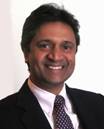

|
Computational Cameras: Redefining the Image
By Shree K. Nayar (USA) Reviewed by Yasemin Yardimci Cetin (Turkey) |
|
Prof. Nayar began his talk by by pointing out that although the traditional pinhole camera model performs a simple and restrictive sampling of the light in a scene, it has remained the dominant camera model over the past 150 years. However, this is changing. With new optics, images can be both geometrically and radiometrically modified while they are captured. These modified, or optically encoded, images can be computationally decoded to produce new types of visual information. This is different from the traditional post-processing of images obtained with regular cameras. Dr. Nayar presented the well-known example of cameras that provide wide fields of view, with emphasis on lens-mirror (catadioptric) systems. He demonstrated the power of such cameras by showing several applications. In addition to standard videoconferencing scenarios, there were surprising applications, such as generating 3D structure from a single image and the spectacular extraction of the ambient environment of a person from a single image of the eye of this person. The talk continued with how optical masks can be used to increase the dynamic range with minimal compromise of resolution. Next came the concepts of direct and global illumination and how each component conveys independent information about the scene. In addition to the research on computational cameras, Prof. Nayar also introduced the educational "Bigshot camera" project that was developed for kids to learn the principles of imaging while having fun. Prof. Nayar ended his talk with the prediction that in 50 years from now, the cameras will be tiny but will use flexible optics and a powerful computer to produce a wide variety of images. More information about Dr. Nayar’s research on computational cameras can be found at www.cs.columbia.edu/CAVE/projects/cc.php. Details on the educational “Bigshot camera” project can be found at www.bigshotcamera.org/. |
|
Shree K. Nayar is the T. C. Chang Professor of Computer Science at Columbia University. He co-directs the Columbia Vision and Graphics Center. He also heads the Columbia Computer Vision Laboratory (CAVE), which is dedicated to the development of advanced computer vision systems. His research is focused on three areas: the creation of novel cameras, the design of physics based models for vision, and the development of algorithms for scene understanding. His work is motivated by applications in the fields of digital imaging, computer graphics, and robotics. |

|
FEATURE:
ICPR 2010 Plenary Talk |

|
Prof. Nayar and the Bigshot camera. |
